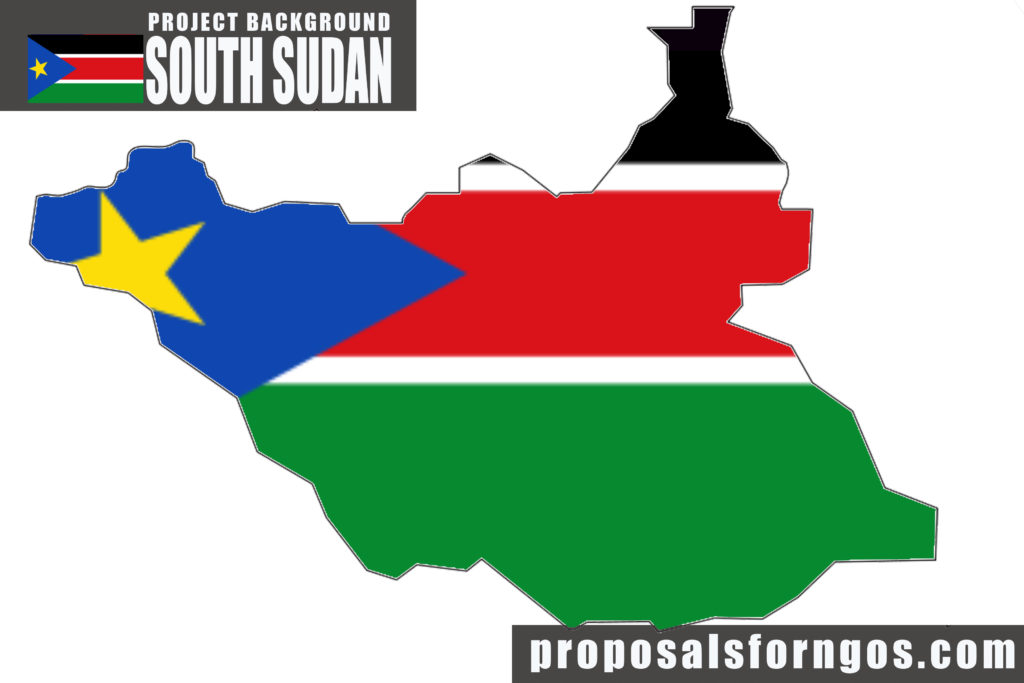The project background is an important part of every proposal. It can be very similar to the project rationale or the project justification. It shows your donor that you did your homework and that your project is planned well. But where can you get the information and data for your project background? And how does one actually look like?
Here you have an example project background for South Sudan. If you are planning or working in South Sudan then you are welcome to use this blueprint. Be sure to add more specific information about your own project though, and add other relevant data according to the region and place.
Project Background of South Sudan
South Sudanese history is one permeated with conflict. Indeed, prior to its 2011 independence, the country was at war with its northern counterpart, Sudan. This resulted from a failed promise that the region would be granted the right to political participation. This discrimination was predominantly based on religious differences. Indeed, there is a distinction between the Muslim-majority north and Christian south. Since 2011, however, bad governance and failed nation-building have plunged the country into turmoil once again, this time resulting in a, still ongoing, civil war. Whatever agreements were reached were quickly upset by the different warring parties roaming the country.
The permanence of this disarray translates into difficult conditions for the 13,026,129 South Sudanese. Indeed, the country’s human development index is 0.388, ranking it 187th in the world. This is explained by 50.6% of the country’s population living under the poverty line, a meager 27% literacy rate and a life expectancy of only 56.3 years.
Similarly, its agriculture-based economy, totaling at $19.75 billion, is one of the worlds lowest, ranking 152nd. This struggling economy is, moreover, plagued by incredibly high corruption, South Sudan being the world’s second most corrupt country.
This translates into high unemployment rates of 13.3%, and poor health conditions. Indeed, only 19.4% of births happen in hospitals. This explains the high child and maternal mortality rates, respectively at 62.8 per 1,000 live births, and 789 per 100,000 live births. Additionally, 27.6% of children under 5 suffer from malnutrition, ranking South Sudan 10th in the category.
The country’s ease of doing business score, however, indicates a difficulty to intervene to better the population’s living conditions. This hinders outside involvement, especially due to its state of civil war, which challenges development projects. High corruption scores further undermine these initiatives. South Sudan, a country in need of much internal change, is, however, one of least open to help in that regard.
If you are looking for more information then there are other sources that you could use like the OECD, World Bank or the UN.
Unless otherwise indicated, the data was retrieved from the CIA World Factbook.
Country: South Sudan
Source: CIA The World Factbook (unless otherwise indicated)
Demographics
- Population: 13,026,129
- Density: 21 per sq/km (Demography)
- Area (Rural/ Urban) – 80.7% / 19.3%
- Under the poverty line: 50.6%
Education
- Literacy rate – 27%
- Average years of schooling- NA
- Average years of schooling male vs. female- NA
Health
- Average life expectancy- 56.3 years
- % of births in hospitals- 19.4%
- Child mortality – 62.8 deaths/1,000 live births
- Maternal mortality- 789 deaths/100,000 live births
- Stunting/Malnourishment in children- 27.6%
- Fertility rate – 5.07 children born/woman
Economy
- Most important sectors- Agriculture
- GDP – $19.75 billion
- Unemployment rate- 13.3%
Ecology
- % of the forested area- 0%
- Number of National Parks- 0
Other:
- Rank Gender Inequality Index – NA (http://hdr.undp.org/en/composite/GII)
- Human Development Index- 0.388 (http://hdr.undp.org/en/countries/profiles/SSD
- Corruption Rank- 179/180 (https://www.transparency.org/country/SSD)
- Ease of doing business- 32.86 (http://www.doingbusiness.org/data/exploreeconomies/south-sudan)

